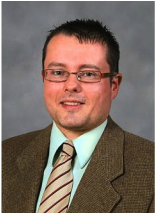ASSAY: A JOURNAL OF NONFICTION STUDIES
3.1
3.1
|
I teach the photo essay as one of several interrelated assignments that collectively make up the capstone project for HNRS 2020: Critical Thinking about Great Ideas at Bowling Green State University in Bowling Green, Ohio. Critical Thinking about Great Ideas is the second of two core curriculum courses that all students enrolled in the Honors College at BGSU must successfully complete in order to graduate with “University Honors.”
This interdisciplinary seminar seeks to introduce students to select foundational thinkers, ideas, and intellectual movements that have shaped human civilizations across a variety of temporal, geopolitical, cultural, and historical conditions. Individual sections of the course expose students to a variety of political, economic, social, cultural, and intellectual ideas and perspectives. Students are encouraged to understand these ideas within the context of the social, human, intellectual, and physical worlds of which they are part, as well as identify relationships between and among competing perspectives about these ideas and ultimately to integrate aspects of these ideas and perspectives into their own worldviews. One of the central goals of this course is for students to learn and gain practice in a critical method of thought and expression that builds on and expands the skill set introduced in HNRS 2010: Introduction to Critical Thinking (which students typically take the semester prior to enrolling in HNRS 2020). To this end, special emphasis is placed on the refinement of higher-order critical thinking skills (i.e., analysis, synthesis, and evaluation) through close reading of and active engagement with both primary and secondary texts. In simplest terms, the photo essay is a project that combines text (captions, introductory remarks, etc.) and photographs to convey an idea. Contributors to Wikipedia offer a more thoughtful overview of the genre, noting that the photo essay is “a set or series of photographs that are intended to tell a story or evoke a series of emotions in the viewer. A photo essay will often show pictures in deep emotional stages. Photo essays range from purely photographic works to photographs with captions or small notes to full text essays with a few or many accompanying photographs. Photo essays can be sequential in nature, intended to be viewed in a particular order, or they may consist of non-ordered photographs which may be viewed all at once or in an order chosen by the viewer.” Students are asked to create a photo essay that includes no fewer than 12 different photographs, each of which must be accompanied by a substantive caption (suggested length: 1 “meaty” paragraph). The photo essay must include an introduction that provides an overview of the photo essay and the larger “point” that students want readers to take away from reading it (i.e., the equivalent of a traditional thesis). I require that all photographs included in the photo essay must be taken by the student-author. Assignment Learning OutcomesThe photo essay assignment strives to fulfill several key Learning Outcomes for the HNRS 2020 course, for the Honors College, and for the BGPerspectives program (i.e., the program that manages the general education curriculum at Bowling Green State University). These learning outcomes include:
Course Pedagogy: Texts and the WorldviewMy sections of HNRS 2020 are anchored by Dennis Ford’s The Search For Meaning: A Short History (2008)—a philosophical survey of the development of Western thought that presents eight primary ways of making meaning, including Myth, Philosophy, Science, Postmodernism, Archetypal Psychology, Pragmatism, Metaphysics, and Naturalism. Each of Ford’s eight worldviews is, in my classes, paired with a work of fiction that illustrates central tenets or/and methodologies associated with that worldview.
This bears an explanation: I pair worldviews with works of fiction primarily for two reasons: 1) my personal areas of expertise are literature and theatre; and 2) the HNRS 2020 course fulfills an “Arts and Humanities” general education requirement for enrolled students. For instance, Naturalism—a worldview that advances the notion that life is meaningful just because it is—is paired with Michael Cunningham’s The Hours (1998) in which characters regularly ruminate on the beauty (and the sorrow) that can be found in the seconds, minutes, and hours that make up our daily lives. For the Science unit, I encourage my students to consider the benefits and the drawbacks of a worldview that only ever looks back to determine “origins” by analyzing a text like Mary Shelley’s Frankenstein (1818) or Philip K. Dick’s Do Androids Dream of Electric Sheep? (1968). And for Myth, which is principally concerned with the metanarratives in which humans often will blindly invest their faith, has been paired with Suzan-Lori Parks’ Topdog/Underdog (2001), a play that engages with the myths of racial supremacy, The American Dream, and sibling rivalry/Cain and Abel, among others. Although my course is centrally focused on how fictional texts can be used to understand better the worldviews presented in Ford’s text, non-fiction texts familiar to Assay's readers could just as easily be used for this purpose. Typically, I pair metaphysics—a worldview that is concerned with the individual’s transcendence of the material, profane world in search of ultimate Truth, Enlightenment, and Wisdom—with Milan Kundera’s The Unbearable Lightness of Being (1984); however, a memoir such as Paul Kalanithi’s When Breath Becomes Air (2016) or a “self-help” book like Eckhart Tolle’s The Power of Now: A Guide to Spiritual Enlightenment (1997) or a book like Lynnette Dickinson’s A Journey to Peace Through Yoga (2015) would arrive at a similarly strong understanding of that worldview. In point of fact, I often have led students through a guided meditation as one of the classroom activities for this unit—an activity that would pair quite nicely with Dickinson’s book. For the Science worldview, I might teach a book like Manhattan Project: The Birth of the Atomic Bomb in the Words of Its Creators, Eyewitnesses, and Historians (2009) to underscore both the methodologies that are integral to this worldview, as well as the strengths and the limitations of seeing the world through the lens of science. Manhattan Project (a nonfiction text that is firmly located within the Scientific worldview) would pair well with the 1986 Marshall Brickman film about that event and challenge students to consider how seeing the same historical event through different “lenses” or “worldviews” alters—sometimes quite dramatically—what we know about the event and how we understand the cultural or/and historical “significance” of that event. Furthermore, different types of “non-fiction texts” could also teach Ford’s worldviews, which is one element that lends itself well to the photo essay as a whole. The photography of Ansel Adams, the paintings of Edward Hopper, or even the community mail art project of Post Secret could enhance students’ understanding of Naturalism, a worldview that emphasizes the value of appreciating the “here and now” through sensual, rather than intellectual, engagement with one’s environments. Students might be asked to read modern travel writing—such as Jack Hitt’s Off the Road: A Modern-Day Walk Down the Pilgrim’s Road into Spain (2005) or Dervla Murphy’s Full Tilt: Ireland to India with a Bicycle (2010)—and then, as a companion assignment, write an essay that describes a destination, cultural experience, language, or tradition from an “outsider’s” perspective. (This type of assignment would foreground for students the act of seeing the world as a Naturalist.) Similarly, for the unit on Pragmatism, which is about how meaning derives from determining the best way to achieve a “satisfying” outcome given the resources available within a given context, students might be asked to read an “advice book” like Erin Bried’s How to Build a Fire: And Other Handy Things Your Grandfather Knew (2010) (or, alternatively, How to Sew a Button: And Other Nifty Things Your Grandmother Knew, 2009) and then, as a companion assignment, write a letter to their own grandchildren explaining some piece of “practical wisdom” that is unique to their generation but that will probably be lost to history and time. Perhaps more relevant to the target audience, students might be asked to read excerpts from Harlan Cohen’s The Naked Roommate: And 107 Other Issues You Might Run Into in College (2015) (which has been chosen by a number of institutions as a Common Read book) or Nora Bradbury-Haehl and Bill McGarvey’s The Freshman Survival Guide: Soulful Advice for Studying, Socializing, and Everything In Between (2016) and then asked to write an “advice blog” for future college students on how to confront a common college conundrum. To be sure, some worldviews more easily lend themselves to certain types of companion texts than others. For example, Philosophy, which, in Ford, is focused on finding meaning through the Platonic Forms, works particularly well with a collection of poetry like Margaret Atwood’s Power Politics (1971) given the emphasis in those poems on evocative, metaphoric language and imagery to convey meaning. Because non-fiction writing typically is more overtly self-reflexive than fiction, it does not easily lend itself to teaching the Mythic worldview, which is centered on a blind faith in and adherence to Master Narratives. But generally speaking, both fiction and non-fiction, as well as a range of other types of cultural artifacts, could work very well to illustrate most of the worldviews included in Ford’s The Search for Meaning. The Assignment: The Photo EssayFrom the onset of the course, I emphasize the central role that self-reflection will play in my students’ own search for meaning by assigning them a variety of projects that encourage them to consider the questions: Where and how do I find meaning? These projects are archived over the term and, as their “final examination,” presented as a capstone website which must include (but is not limited to):
Alternate Assignment ApplicationsI have used (or could imagine using) the photo essay assignment in a wide variety of courses and across the disciplines. Below are three suggestions for alternate applications of the photo essay assignment:
Assignment EvaluationLike all assignments for the capstone project, the photo essay must demonstrate an awareness and a deep understanding of the course readings (esp. Ford) and should be deeply self-reflective. More specifically, the photo essay is evaluated according to the following criteria: adherence to photo essay guidelines/genre expectations; thoughtful development of ideas; logical and clear organizational structure; keen awareness of audience expectations, needs; thoughtful construction of visual aid; adherence to rules of effective written communication; clarity of expression; and thoughtful engagement with course readings.
Sample Photo EssaysThe following sample photo essays were created by students enrolled in my HNRS 2020 sections during the Spring 2016 term. Students have consented to their work being linked/published in this forum:
|
Click here to download a printable PDF with Works Cited.
|
Heath A. Diehl is a Lecturer in the Department of English and Honors College at Bowling Green State University where he teaches courses in critical thinking, contemporary literature, and world drama. He is author of Stages of Sexuality: Performance, Gay Male Identity and Public Space(s) and Wasted: Performing Addiction in America. Heath currently is at work on a book project about “addiction fiction.”
|
Related Works
|
Richard Stuart Gilbert
Classics Lite: On Teaching the Shorter, Magazine Versions of James Baldwin's "Notes of a Native Son" and Jonathan Lethem's "The Beards" 3.1 Pedagogy |

